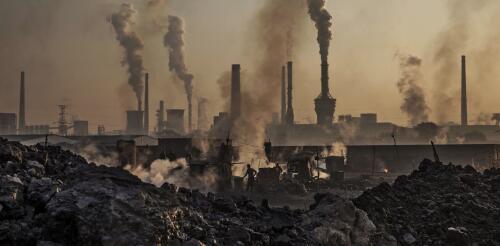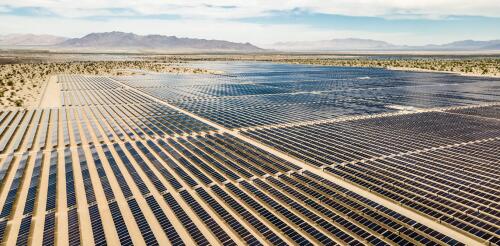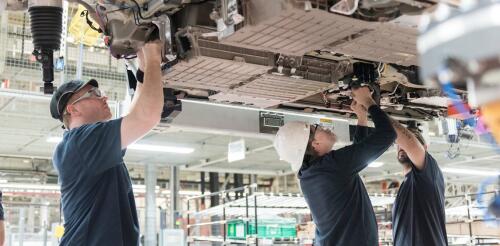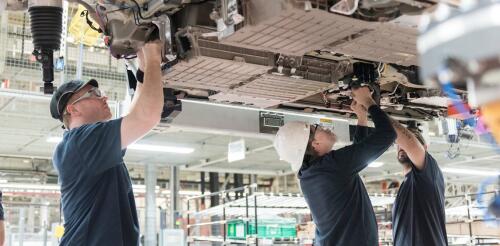Inflation Reduction Act
As government leaders and climate negotiators gather in Dubai for the COP28 United Nations climate conference, an enormous challenge looms over the proceedings: decarbonizing the global industrial sector. Industry has accounted for over 30% of total greenhouse gas emissions in recent years. It is the single largest emitting sector when accounting for its electricity use and heat generation. For countries to meet their goals to cut greenhouse gas emissions, stopping emissions from carbon-intensive industries like steel, cement and chemicals is imperative. There are promising technologies and innovations that can drive decarbonization in industry: green hydrogen fuel made from clean electricity and water, energy efficiency measures across supply chains, and carbon capture, use and storage to name a few. However, these solutions have yet to be deployed at the speed and scale required to slow global warming. Global industrial emissions will need to fall by 25% by 2030 for the...
Although Vice President Kamala Harris touts clean energy and Donald Trump makes misleading assertions and false claims about it, neither candidate has set forth a comprehensive energy plan. Even if they do, a gridlocked Congress would be unlikely to pass it. Instead, the next president’s greatest influence on clean energy will come through their handling of legislation and regulations put in place since 2021 under the Biden-Harris administration. As an environmental engineer who studies energy and climate change, I expect that Harris, who has strongly supported these policies, would follow through on them, while Trump’s record as president suggests that he would try to roll them back. Trade policies toward China, the leading producer of clean energy technologies, will also be key. Donald Trump and Kamala Harris discuss clean energy policy during their presidential campaign debate on Sept. 10, 2024. Legislation and regulations Th...
Hydrogen, or H₂, is getting a lot of attention lately as governments in the U.S., Canada and Europe push to cut their greenhouse gas emissions. But what exactly is H₂, and is it really a clean power source? I specialize in researching and developing H₂ production techniques. Here are some key facts about this versatile chemical that could play a much larger role in our lives in the future. So, what is hydrogen? Hydrogen is the most abundant element in the universe, but because it’s so reactive, it isn’t found on its own in nature. Instead, it is typically bound to other atoms and molecules in water, natural gas, coal and even biological matter like plants and human bodies. Hydrogen can be isolated, however. And on its own, the H₂ molecule packs a heavy punch as a highly effective energy carrier. It is already used in industry to manufacture ammonia, methanol and steel and in refining crude oil. As a fuel, it can store energy and reduce emi...
The United States is in the midst of the biggest boom in clean energy manufacturing investments in history, spurred by laws like the bipartisan Infrastructure Investment and Jobs Act and the Inflation Reduction Act. These laws have leveraged billions of dollars in government support to drive private sector investments in clean energy supply chains across the country. For several years, one of us, Jay Turner, and his students at Wellesley College have been tracking clean energy investments in the U.S. and sharing the data at The Big Green Machine website. That research shows that companies have announced 225 projects, totaling US$127 billion in investment, and more than 131,000 new jobs since the Inflation Reduction Act became law in 2022. You may have seen news stories that said these projects are at risk of failure or significant delays. In August 2024, the Financial Times reported that 40% of more than 100 projects it evaluated were delayed. These included battery manufacturi...
The United States is in the midst of the biggest boom in clean energy manufacturing investments in history, spurred by laws like the bipartisan Infrastructure Investment and Jobs Act and the Inflation Reduction Act. These laws have leveraged billions of dollars in government support to drive private sector investments in clean energy supply chains across the country. For several years, one of us, Jay Turner, and his students at Wellesley College have been tracking clean energy investments in the U.S. and sharing the data at The Big Green Machine website. That research shows that companies have announced 225 projects, totaling US$127 billion in investment, and more than 131,000 new jobs since the Inflation Reduction Act became law in 2022. You may have seen news stories that said these projects are at risk of failure or significant delays. In August 2024, the Financial Times reported that 40% of more than 100 projects it evaluated were delayed. These included battery manufacturi...




